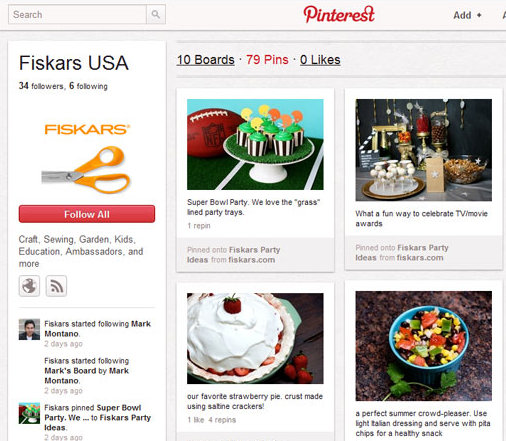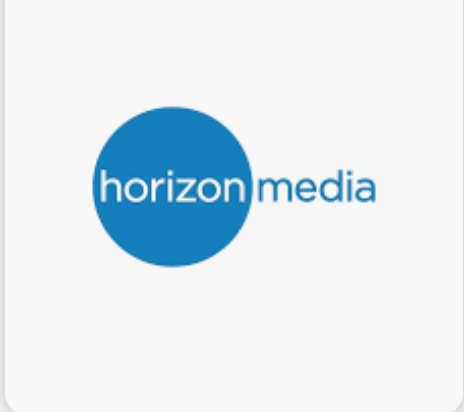Lately it’s been hard to go a day without reading about how Pinterest, the social platform that lets members curate content related to things they like, is the new Twitter: a tool that consumers are adopting and that marketers had better learn to use too.
But exactly what’s in Pinterest for marketers? What can they benefit from by participating in the platform, and why should they devote some of their all-too-scarce social media bandwidth (time, personnel and created content) to a platform that most had never heard of six months ago?
In a word, traffic. According to research done by sharing solution provider Shareaholic on some 200,000 web sites, the Pinterest platform drove 3.6% of referral traffic in the month of January 2012. That’s a greater referral performance than the traffic from YouTube, Google + and LinkedIn for that month, as well as being a respectable increase over the 2.5% of traffic that Pinterest referred just the month before. By comparison, Shareaholic found, Pinterest drove only .17% of Web referral traffic last July.
Web metrics firm comScore also ranked Pinterest fourth in visits among social networks for the week ending February 25, 2012.
Okay, so it’s a growing source of visitors. But who are its members and how do they use it?
Pinterest offers a virtual bulletin board that lets its users “pin” content to their personal pages—either content they’ve generated themselves or, more often, content they’ve found elsewhere on the web. The platform then lets others see that content and have the option to re-pin it to their own boards, creating yet another channel for viral spread.

Users can create a number of different boards for themselves, each devoted to a single interest or project, such as remodeling a room in their house, and can collect and curate different content on each one.
Out of beta mode around two years ago, Pinterest now has about 12 million users in the U.S. and about 200,000 in Great Britain. The overwhelming majority of these are female; in the U.S., about 83% of the total membership. Most of those are reportedly in the 35-44 age range. New would-be users request an invitation to join or are invited by current Pinterest members.
As with Twitter, members can follow each other, either getting notified when a user has added to any of their boards or only seeing what has been added to a specific board in which they have an interest: a recipe or fashion board, for example. As in Facebook, they can also “like” someone else’s pin, which adds the image to the “Likes” section of their Pinterest account but doesn’t let them transfer the whole content or categorize it to one of their boards.
Web site operators can add a “Pin It” button to the various content elements on their sites, making it easier for their content to get onto users’ boards. And that seems to be the most substantial reason to date for marketers to get involved with Pinterest.
Web Traffic Is the Goal Line
Herndon Hasty, associate director for SEO at digital agency iProspect, says that one of his firm’s retailer clients started 2011 getting virtually no referrals from Pinterest. But by last November, that client was getting traffic through the Pinterest network that equaled about one-fourth the monthly referrals that were coming through Facebook.
“And that’s without having any kind of brand presence there,” he says. “This is solely from people going to their web site, finding images of products there that they like, and then sharing them.” If you sell products or offer content—especially visual content—on your web site, chances are good that Pinterest members are already sharing that content without your knowledge.
Marketers should get their brands active on Pinterest, pinning content directly to the platform. The goal in participating officially is to try to harness the platform, to get a better understanding on what types of your content users are most interested in sharing, and then to leverage Pinterest as a channel for communicating more directly with brand fans.
Just being able to define what content members are most interested in—by measuring how many users re-pin those assets– has a good deal of value for boosting engagement on a web site. “People magazine runs a board that offers celebrity recipes,” says Hasty. “They have maybe a dozen or so up there now, and most of them get three re-pins, or four. But in this mix of content with low re-pins there are some recipes that have 20 or 30—recipese from Giada De Laurentiis and Hugh Jackman. Frankly if I’m People magazine and see that, I’m asking how we can make more content like this or at least make a bigger deal around the content we have from these two personalities.”
Something like 80% of the content currently on Pinterest is actually re-pins of items members have found on others’ boards, so the opportunity to reach people other than those who are already fans and familiar with your brand offering is high. “If you can get people who see what you’re posting to like it enough to re-pin it on their boards, all of a sudden you’re reaching their audiences as well,” Hasty says.
The kind of content that marketers will post to Pinterest in this managed approach will vary depending on their industry vertical. In general retailers fare well because their product pages are already visual; Pinterest skews heavily toward sharing pictures, and retailers can more easily encourage content sharing not only with a Pinterest brand account of their own but by placing Pin-It buttons next to product offerings on their web sites, similar to Facebook Like buttons.
Within those Pinterest brand accounts, hasty says, marketers should think strategically and pay attention to what members are most likely to be interested in by virtue of timing or engagement. Apparel marketers can put together “look books” for the coming season, for example, or arrange clothing and accessories into outfits.
The luxury retailers using Pinterest under iProspect’s direction make sure to create separate boards for the top designer lines within their overall inventory. “When you know you have a new line coming in, be sure to drop a couple of pieces from that collection into that board,” Hasty recommends. Other marketers can use the platform to stir up interest in new product launches or to offer tips on trends.
The general approach should be similar to using Facebook or Twitter for social marketing, Hasty says, in that marketers should add third-party content that their followers and fans will find interesting, rather than just turning Pinterest into a non-transactional catalog of their wares. For example, The Gap generates concepts for its Pinterest boards such as “snow”, and mingles photos of some of its winter apparel lines with re-pinned or original pictures showing people playing in the snow—on the theory that those are just as likely to get shared and to draw new users in to the Gap boards.
“Just as you do in Twitter, marketers in Pinterest should be going beyond just their product selections and speaking to members about a lifestyle,” Hasty says. He points to the example of microprocessor maker AMD, which intersperses content relating to its own products with pictures and re-pins about cool third-party computer accessories that will be of interest to Pinterest’s largely female membership. “That outside content is meant to capture the attention of that particular audience segment, hold their interest and keep them looped into the brand,” he says.
If all this sounds like another chore added to the growing list of social media duties marketers must manage daily or weekly, there’s some good news: Pinterest is designed to operate as an overlay on both Facebook and Twitter, so that members who post pictures or other content to those networks can easily also share it on the Pinterest boards. Marketers too can tap into that connection and repurpose into Pinterest some of the more visual content they’re putting they’re already deploying on other platforms such as Facebook or Tumblr. They can also set controls that link a Pinterest account to their Facebook and Facebook Timeline content.
ROI, Other Considerations Cloudy
As with most other fledgling social media, metrics, ROI and ancillary benefits are still very much to be determined for Pinterest. Transactions can’t happen within the network, so the key to incremental sales is getting members to come to your boards frequently, enabling them to click through to your web site to convert, and endeavoring to make the quality of your content enticing enough that your brand is top of mind when they’re ready to buy somewhere else.
Even Pinterest is challenged to figure out how to make money off its model right now. Some blogs have detected evidence that Pinterest has been adding affiliate tracking codes to pins that link to ecommerce sites with the aim of taking a fee for any transactions that make occur if members click through to a site and buy. That could raise questions of disclosure or even ethics if Pinterest doesn’t take steps to make that financial relationship apparent before users click through to buy.
Other factors might also erode the platform’s appeal for members or its utility for marketers and web publishers. For example some photo aggregator sites are not overly pleased that their content can be pinned and shared easily. Flickr and several stock photo vendors have taken steps to prevent their copyrighted content from being shared via Pinterest.
The search optimization benefits of Pinterest are also in flux. Pinterest used to let search engines track the links that went from pinned image content to the sources of those images on outside web sites. Since Pinterest is a strong domain with lots of active users expressing their approval of the content they find and re-pin, those links conferred Google search benefits on the web pages containing those images. But in recent days Pinterest has put a “nofollow” attribute on most of those image links. That means that the pictures now do nothing to enhance a web page in the eyes of Google or the other search engines—no matter how often they get shared.
Those uncertainties aside, marketers are still left with two primary benefits from active, thoughtful Pinterest participation: the chance to tap into a new, and growing, source of referral traffic to their pages, and a fresh new opportunity to stimulate viral buzz around their marketing and merchandising.
And to those marketers who have already decided that they just don’t have the bandwidth to dive into yet another social-media endeavor, one question: How big did Twitter have to get before you stopped doubting and started tweeting?



